Abstract
A comparative study of the binding of square planar cis- and trans-[Pt(NH3)2Cl2] complexes and the octahedral [Ru(NH3)5(H2O)]3+ complex to tRNAphe from yeast was carried out by X-ray crystallography. Both of the carcinostatic compounds, cis-[Pt(NH3)2Cl2] and [Ru(NH3)5(H2O)]3+ show similarities in their mode of binding to tRNA. These complexes bind specifically to the N(7) positions of guanines G15 and G18 in the dihydrouridine loop. [Ru(NH3)5(H2O)]3+ has an additional binding site at N(7) of residue G1 after extensive soaking times (58 days). A noncovalent binding site for ruthenium is also observed in the deep groove of the acceptor stem helix with shorter (25 days) soaking time. The major binding site for the inactive trans-[Pt(NH3)Cl2] complex is at the N(1) position of residue A73, with minor trans-Pt binding sites at the N(7) positions of residues Gm34, G18 and G43. The similarities in the binding modes of cis-[Pt(NH3)2Cl2] and [Ru(NH3)5(H2O)]3+ are expected to be related to their carcinostatic properties.
Full text
PDF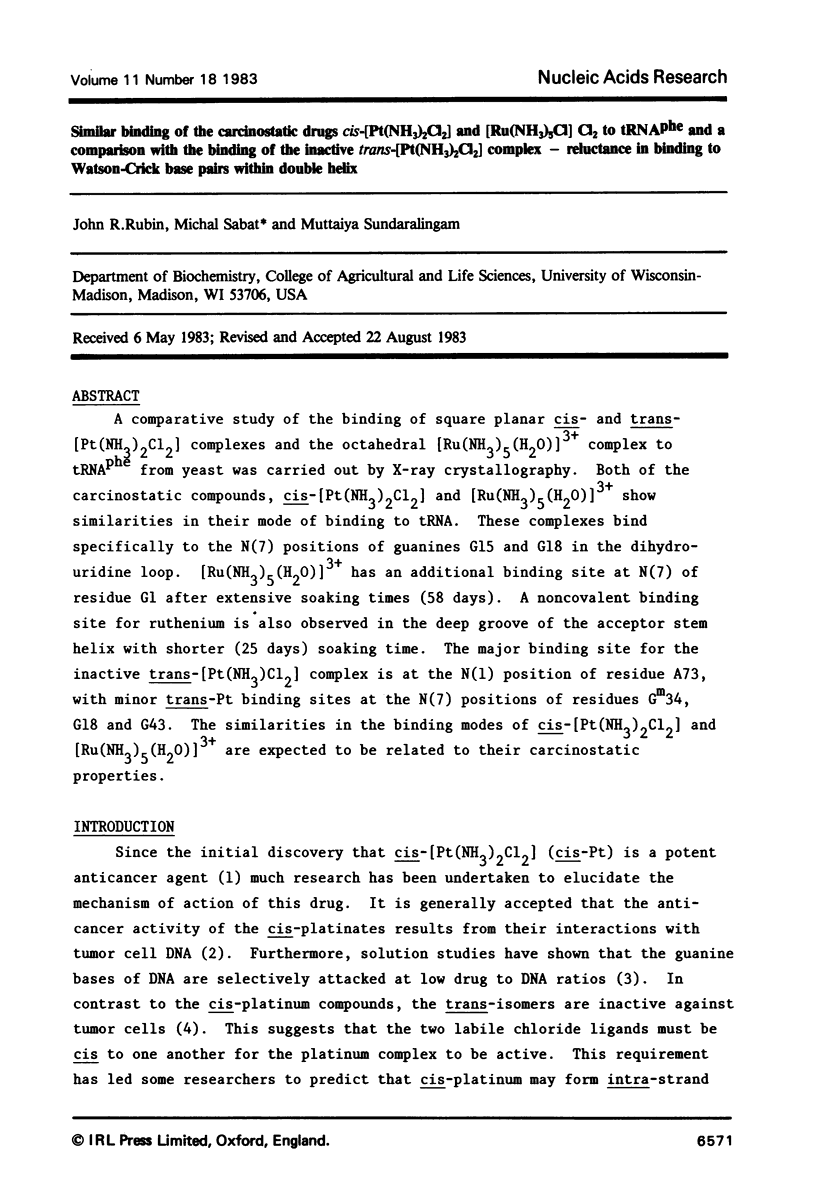
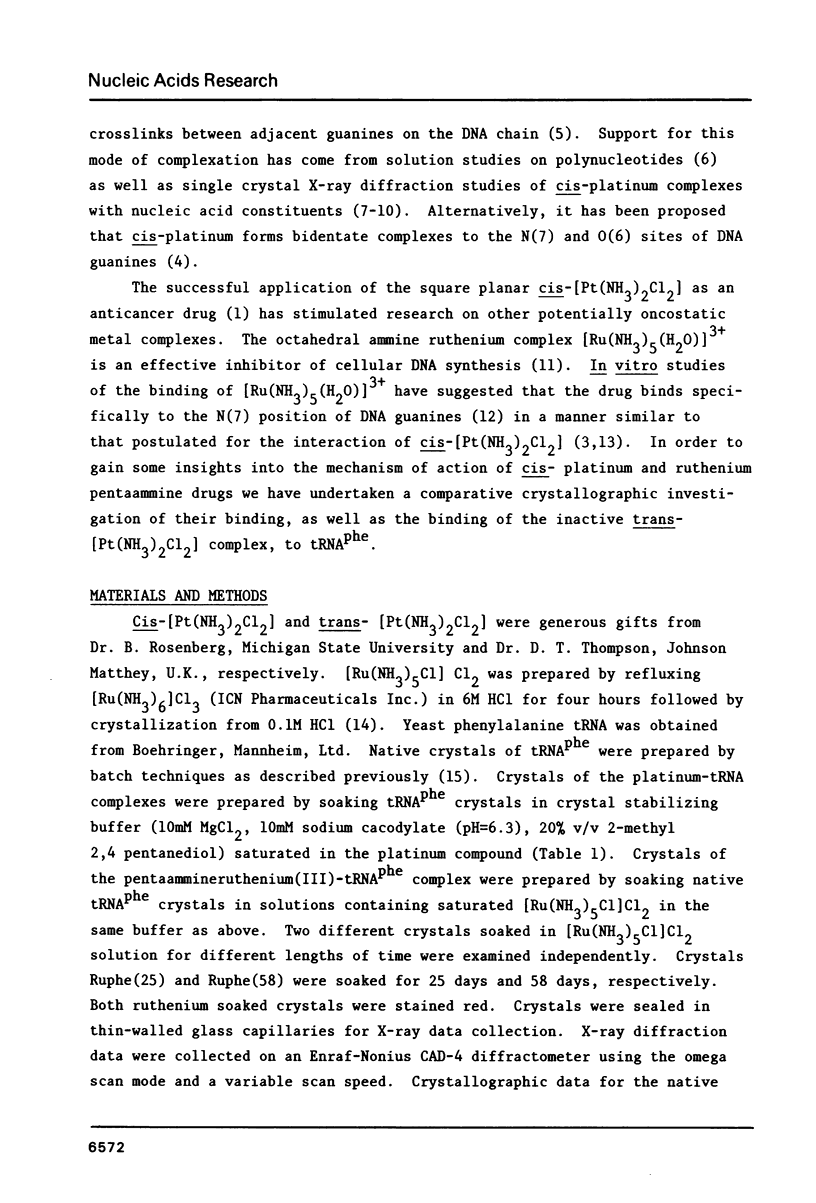
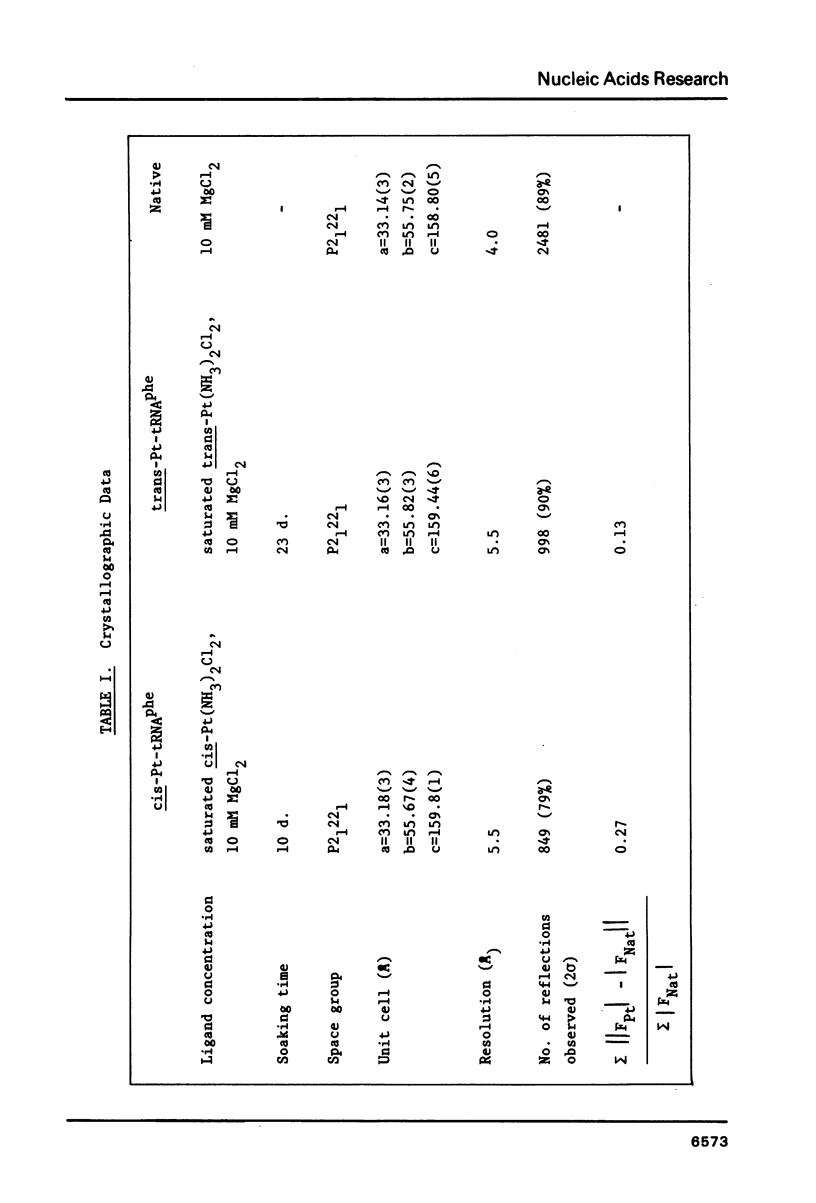
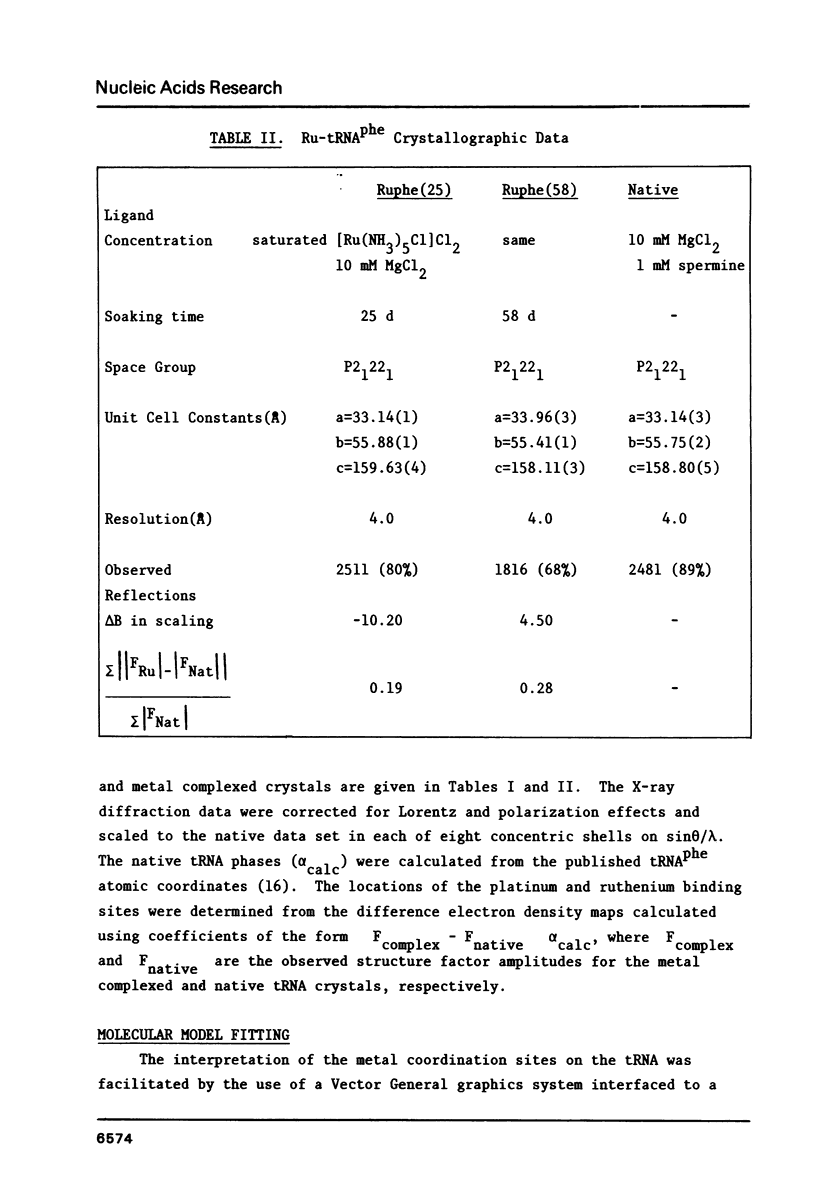
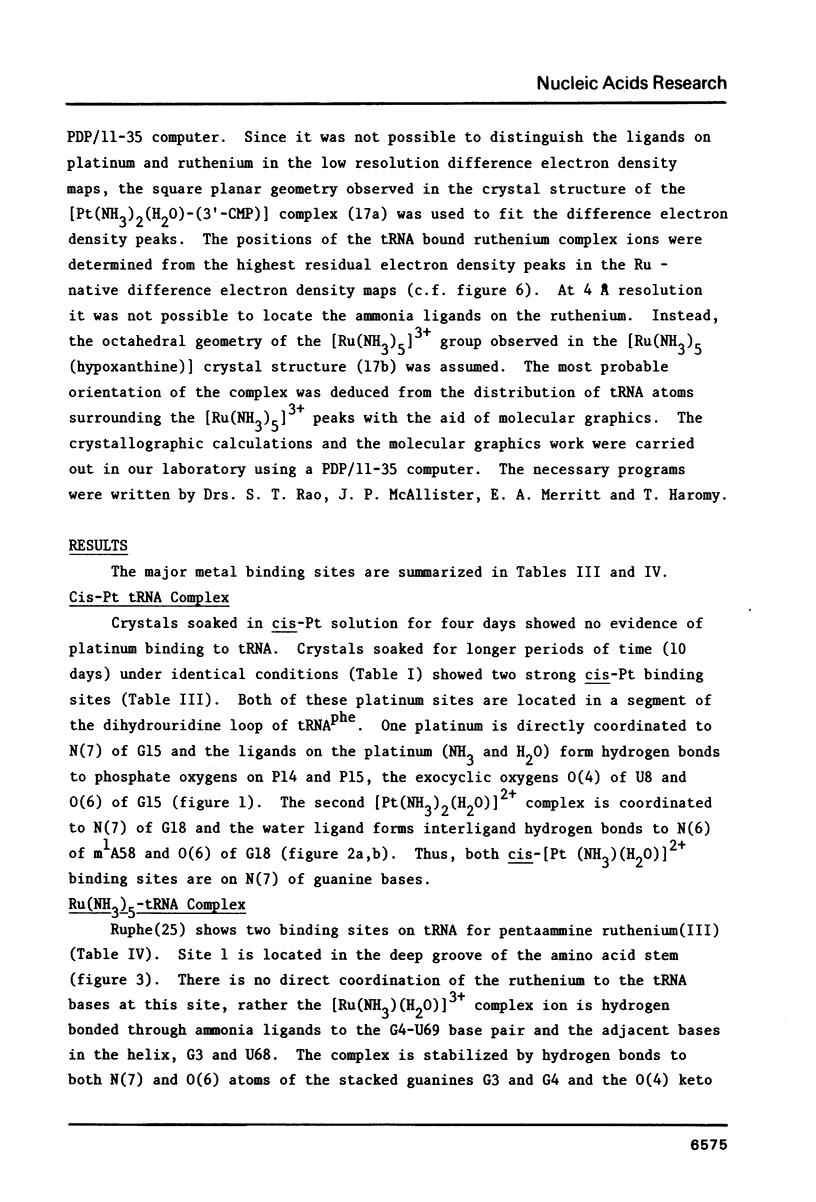
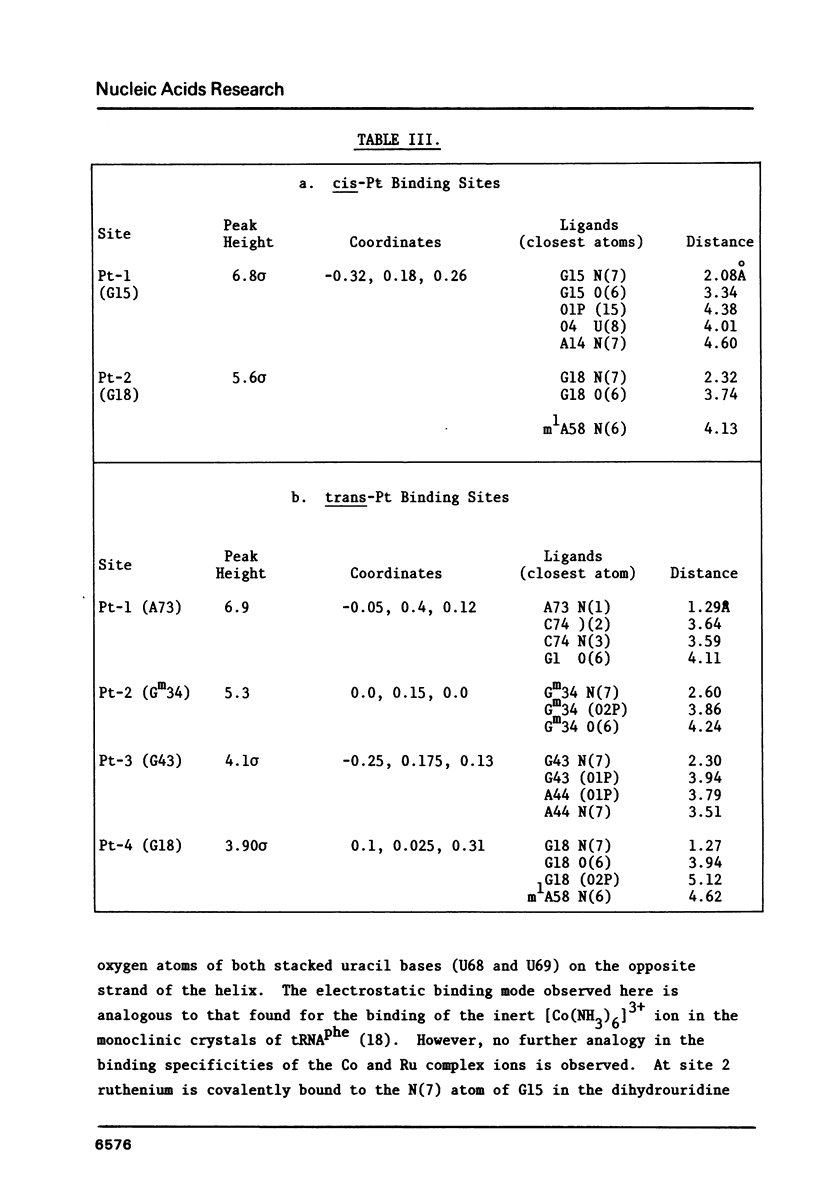
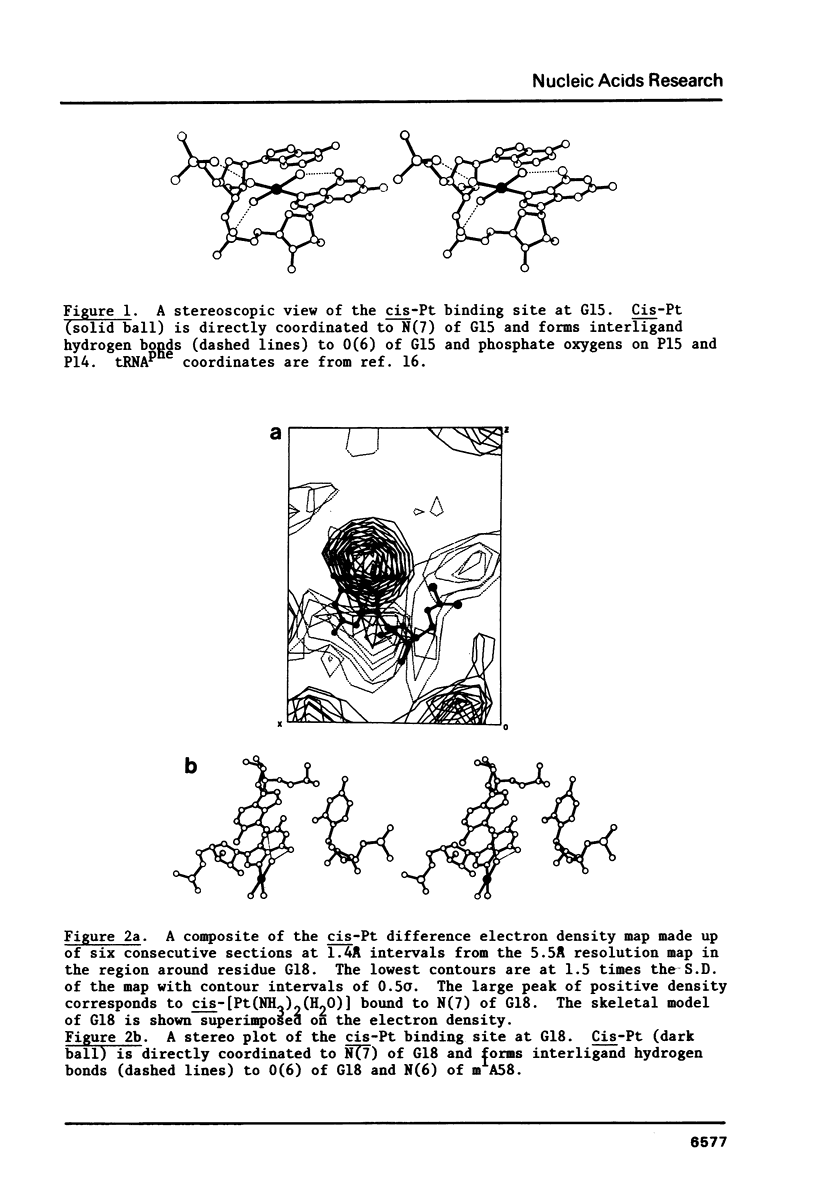
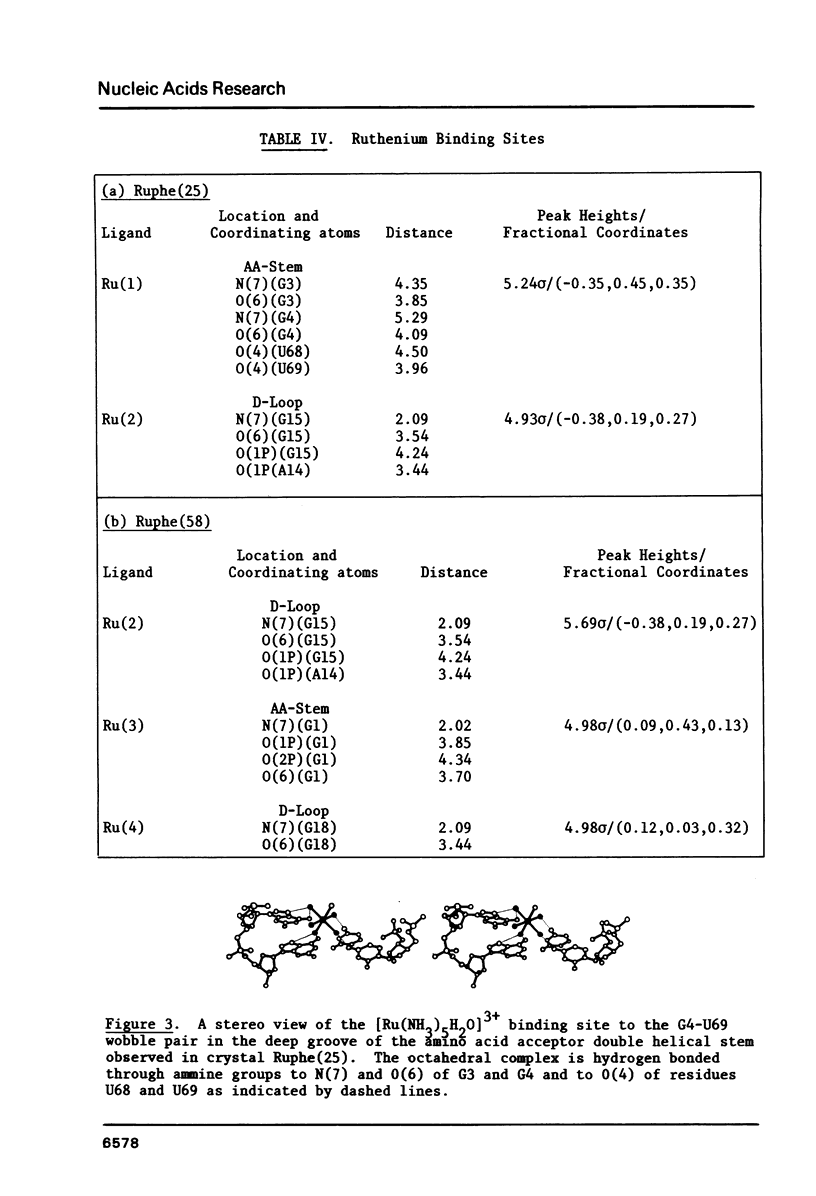
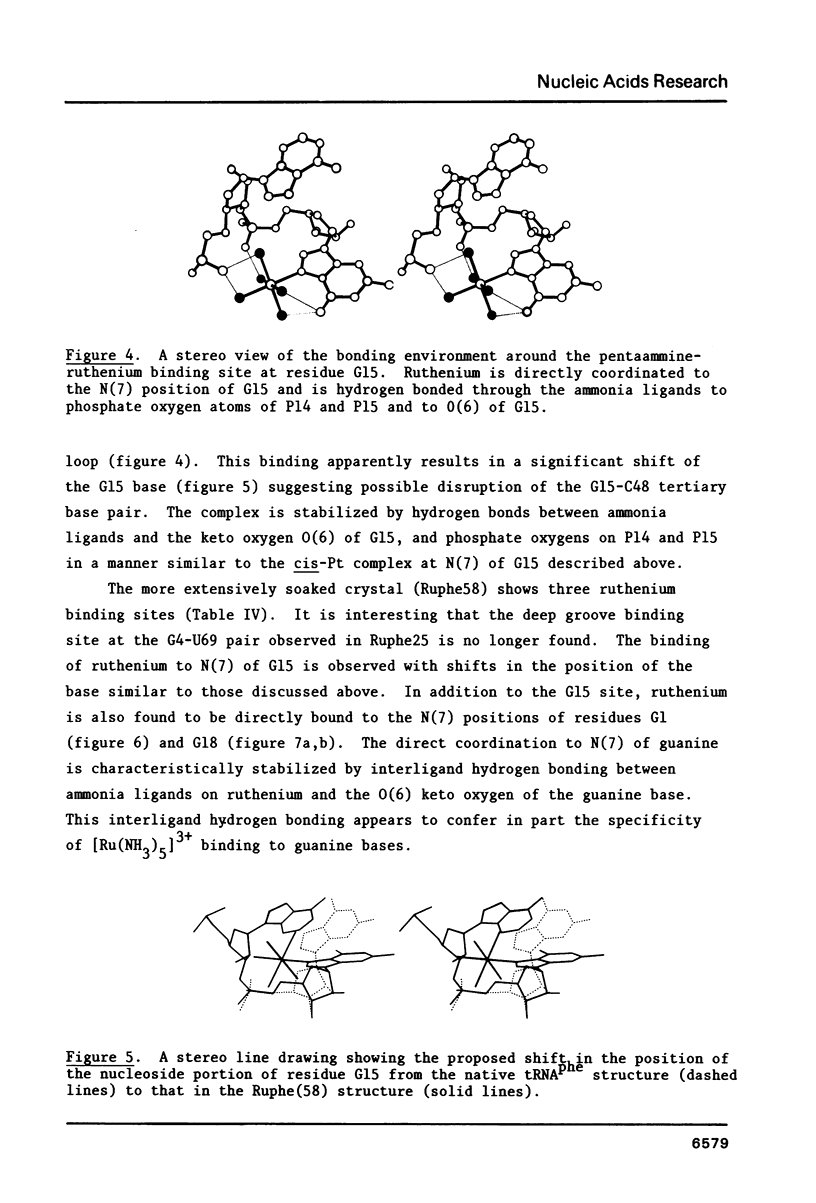
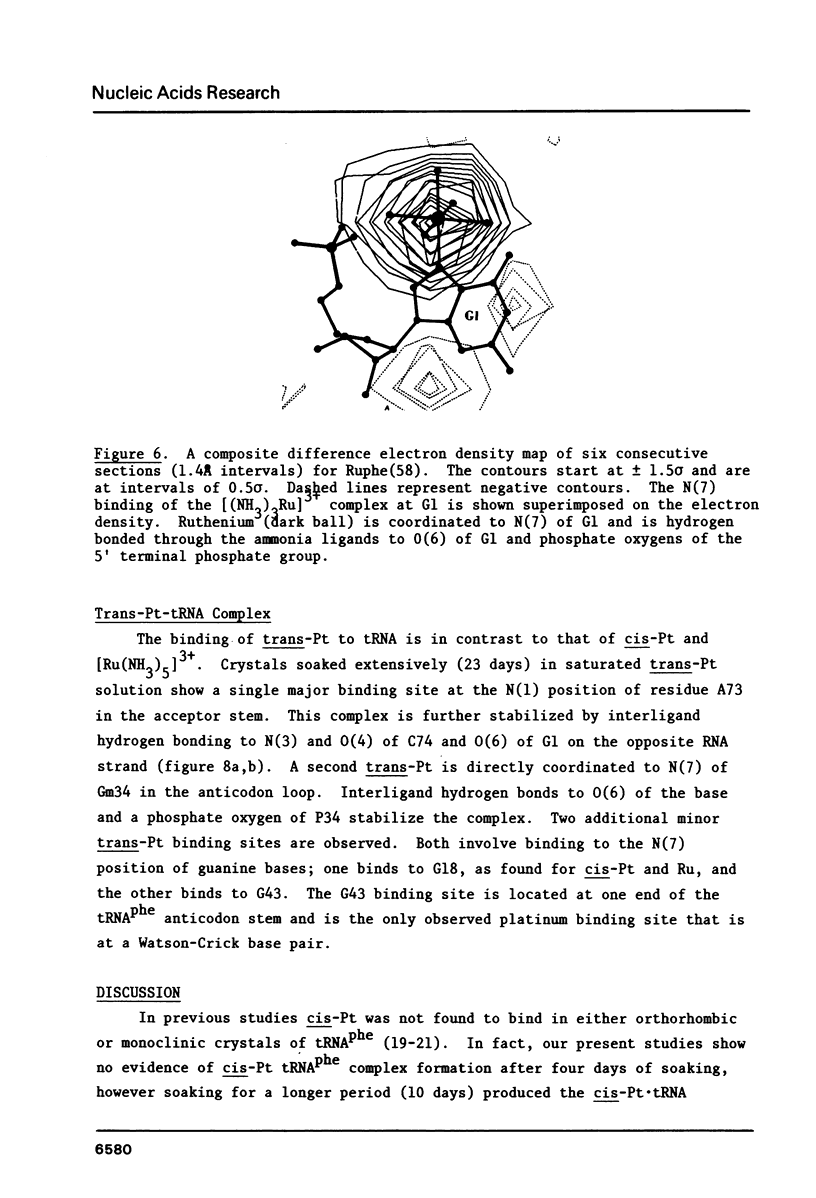
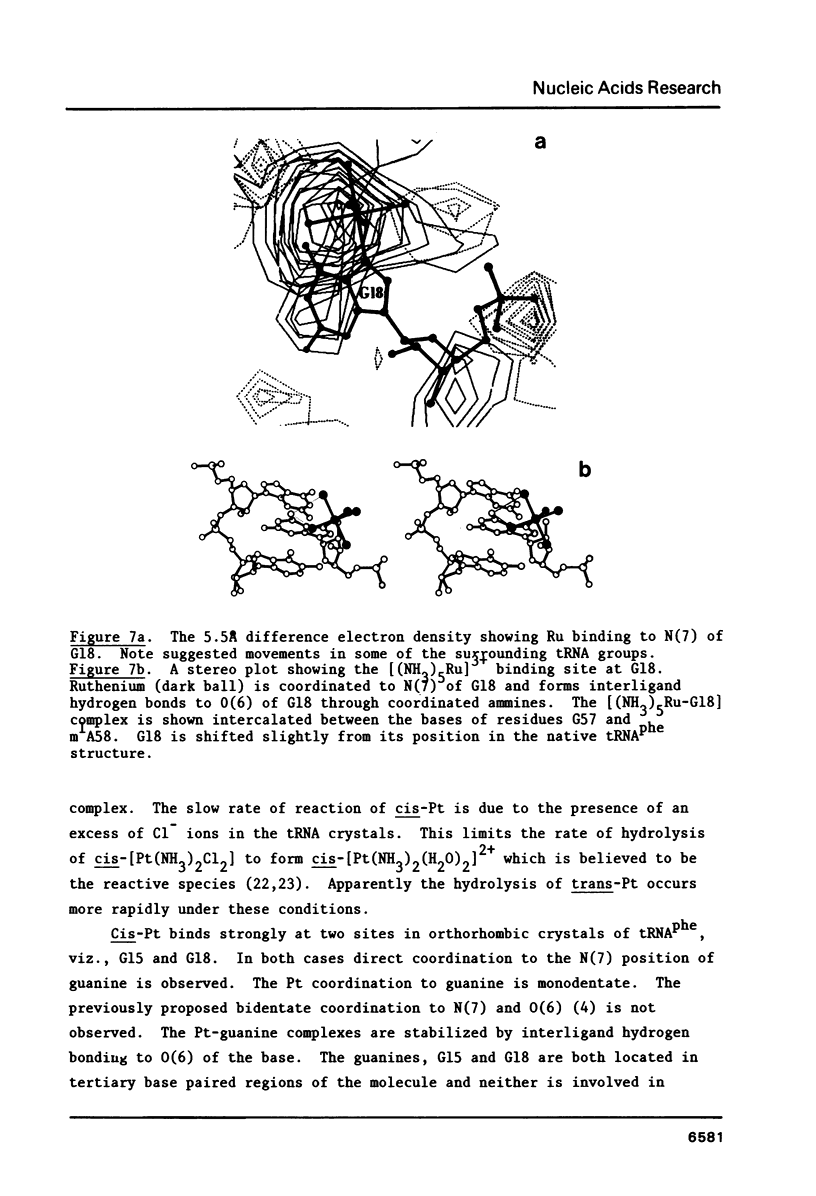
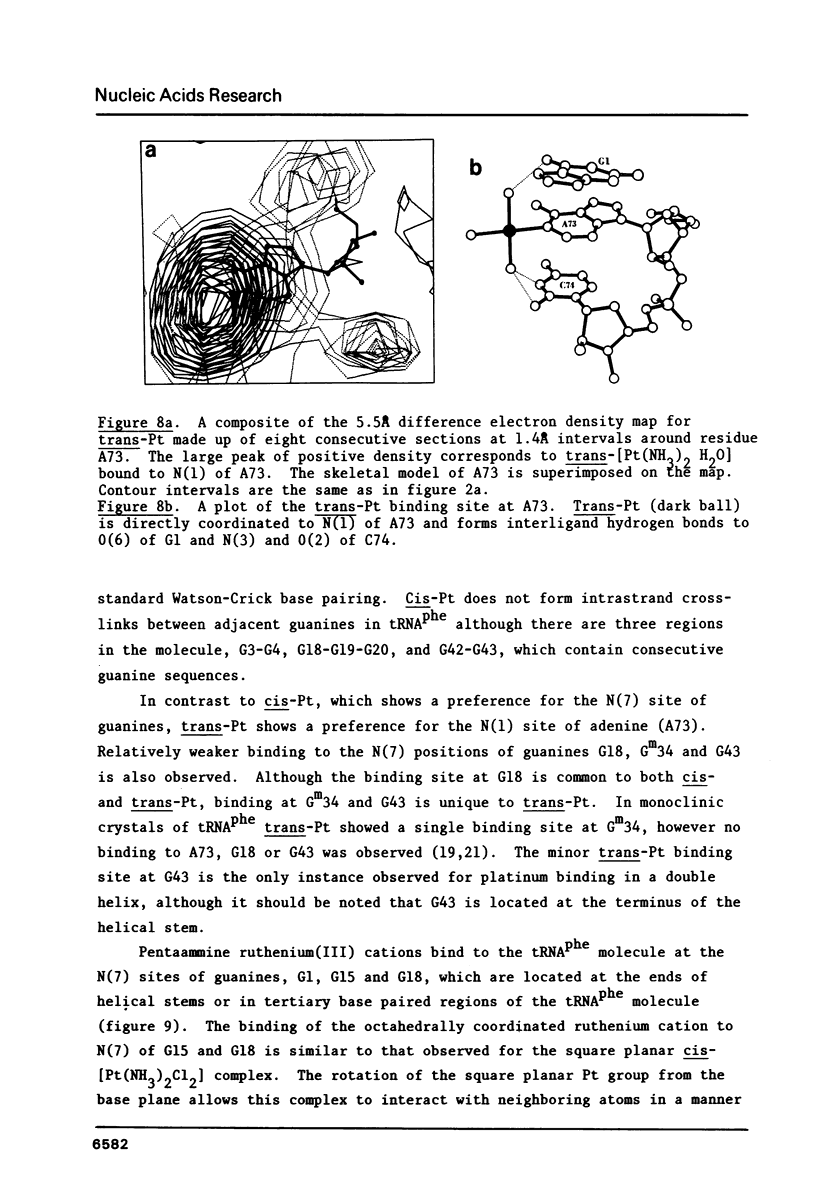
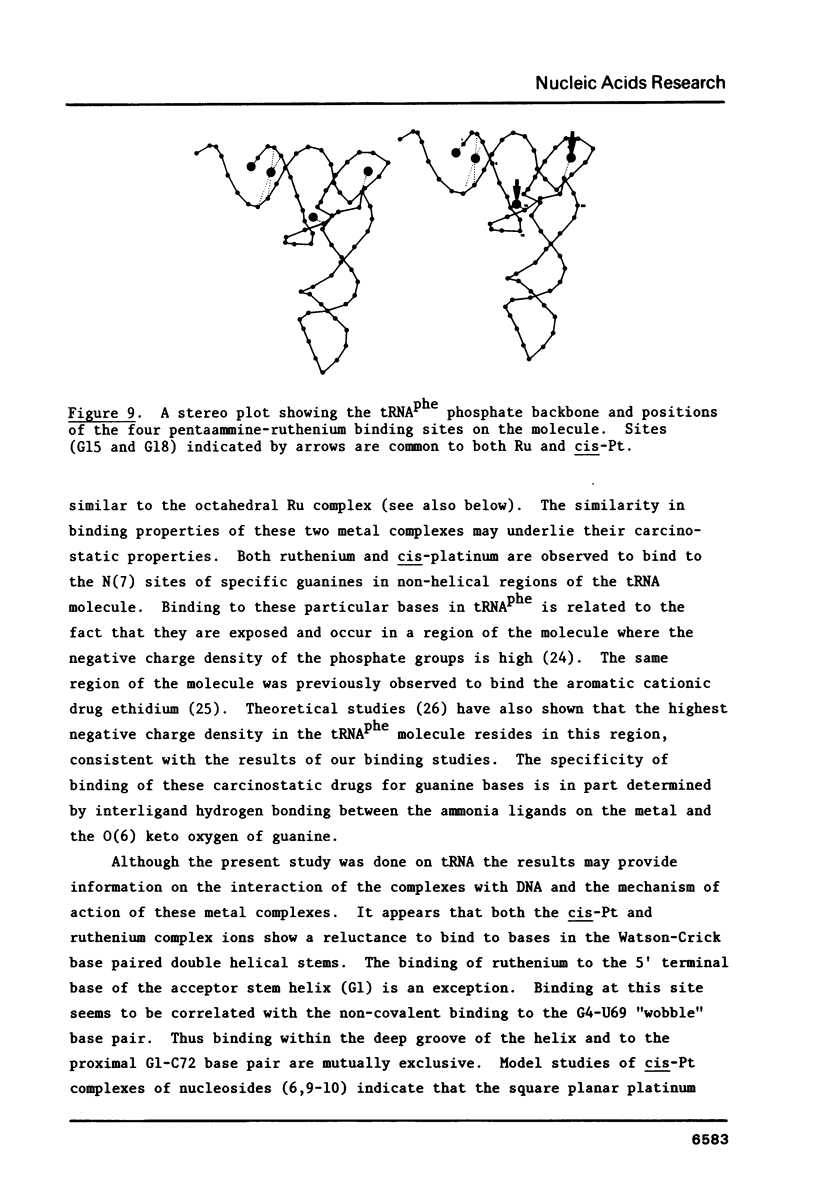
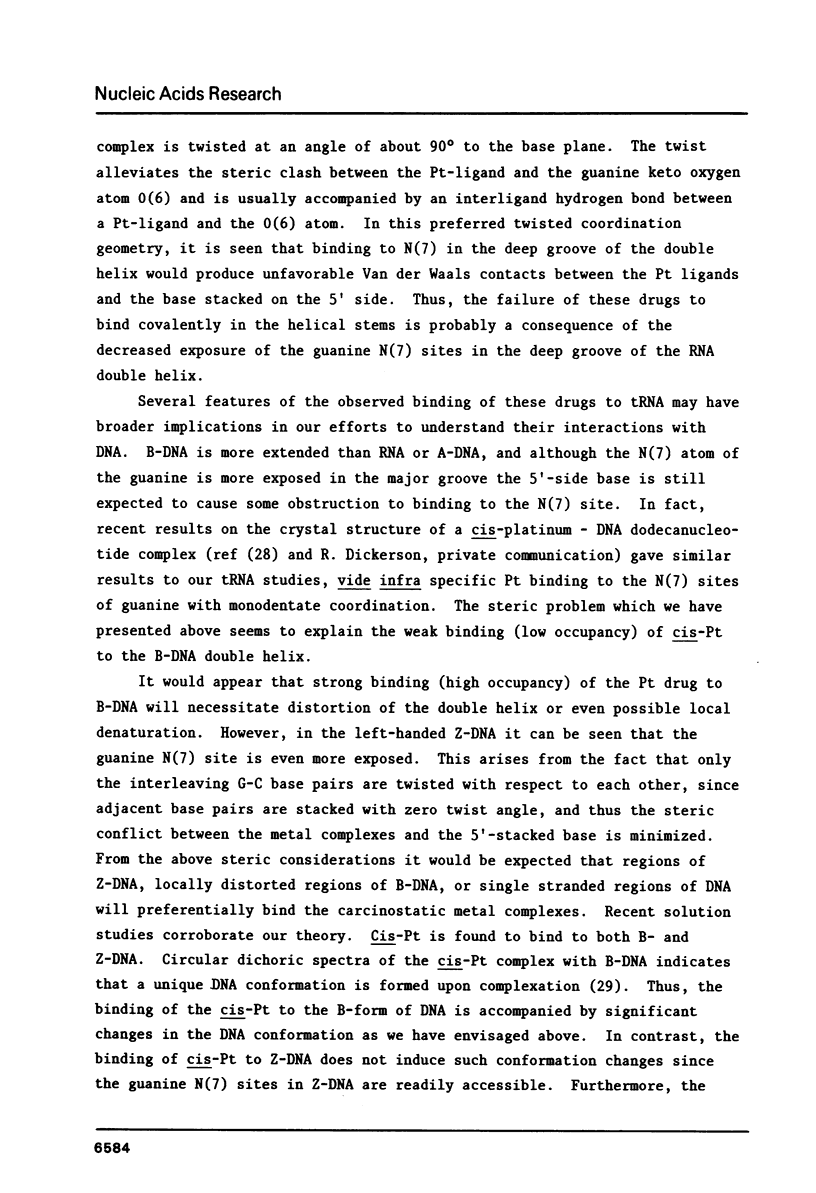
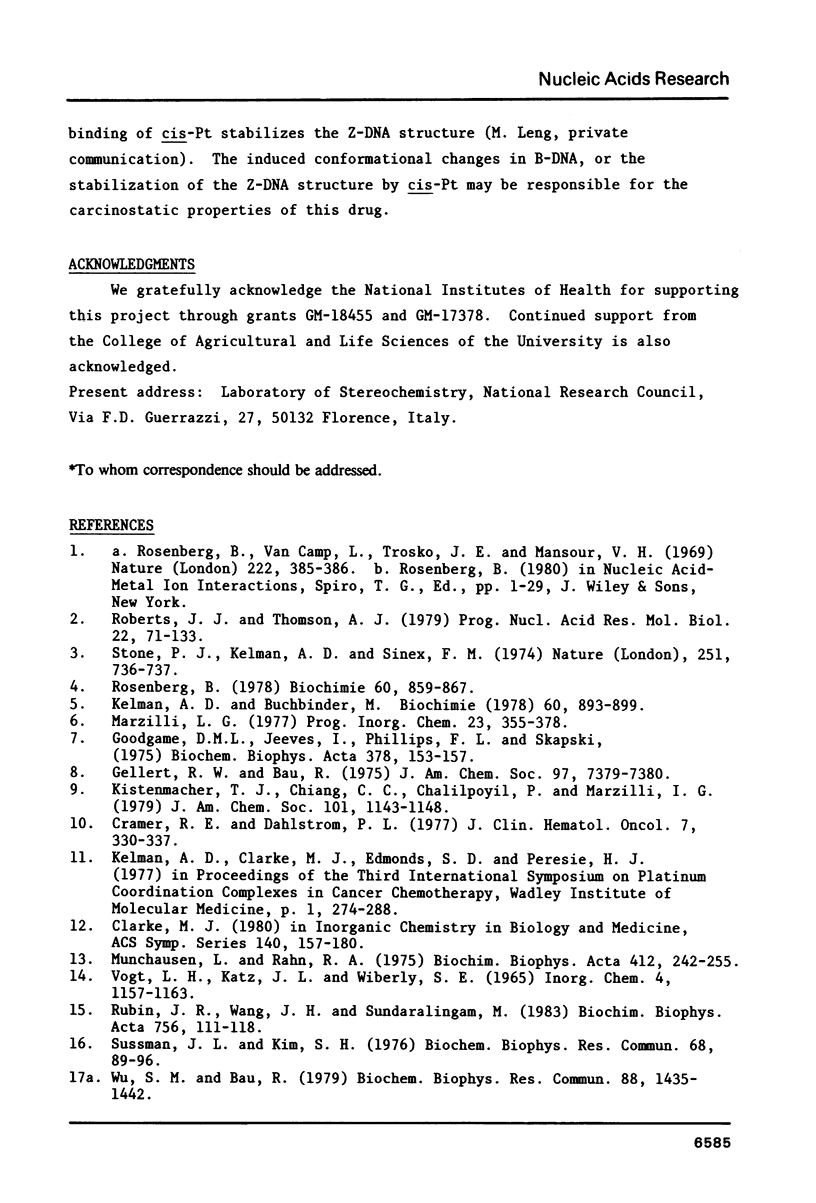
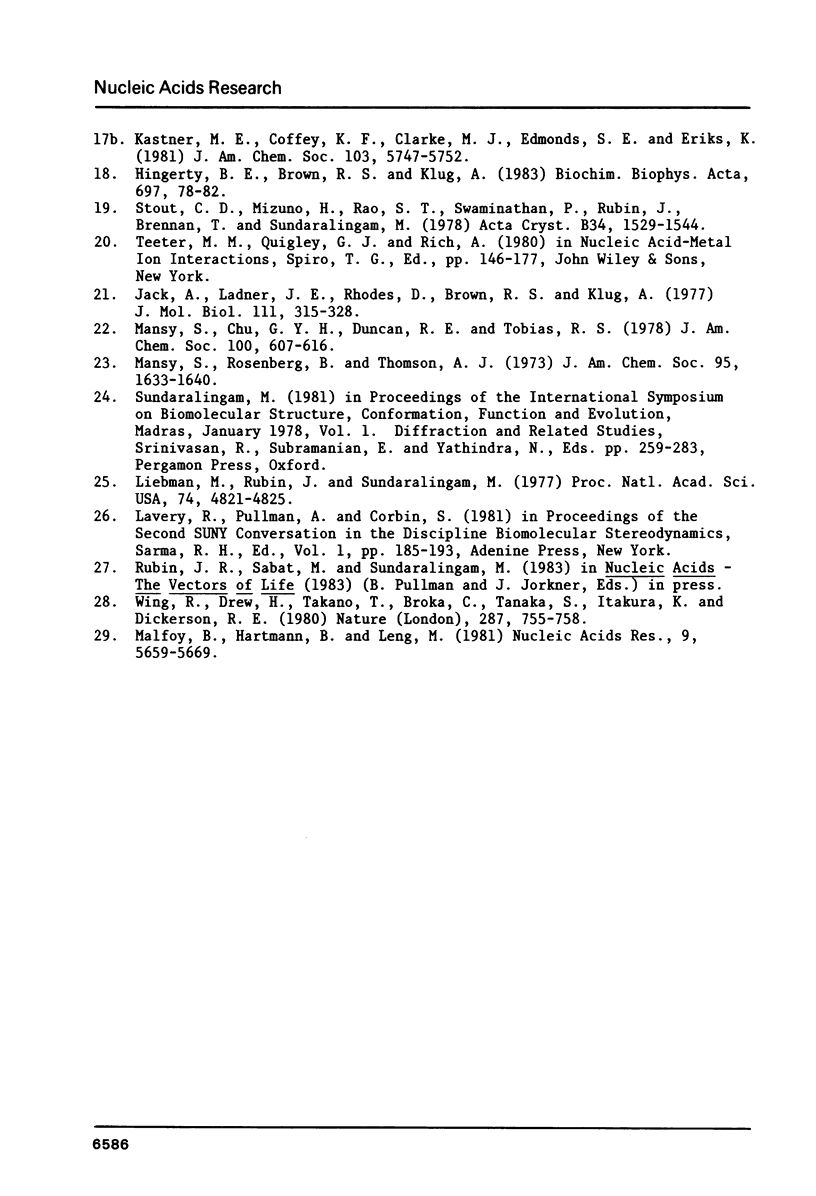
Selected References
These references are in PubMed. This may not be the complete list of references from this article.
- Gellert R. W., Bau R. Letter: The structure of (platinum(ethylenediamine)(guanosine)2)2+ cation. J Am Chem Soc. 1975 Dec 10;97(25):7379–7380. doi: 10.1021/ja00858a031. [DOI] [PubMed] [Google Scholar]
- Hingerty B. E., Brown R. S., Klug A. Stabilization of the tertiary structure of yeast phenylalanine tRNA by [Co(NH3)6]3+. X-ray evidence for hydrogen bonding to pairs of guanine bases in the major groove. Biochim Biophys Acta. 1982 Apr 26;697(1):78–82. doi: 10.1016/0167-4781(82)90047-1. [DOI] [PubMed] [Google Scholar]
- Jack A., Ladner J. E., Rhodes D., Brown R. S., Klug A. A crystallographic study of metal-binding to yeast phenylalanine transfer RNA. J Mol Biol. 1977 Apr 15;111(3):315–328. doi: 10.1016/s0022-2836(77)80054-5. [DOI] [PubMed] [Google Scholar]
- Liebman M., Rubin J., Sundaralingam M. Nonintercalative binding of ethidium bromide to nucleic acids: crystal structure of an ethidium--tRNA molecular complex. Proc Natl Acad Sci U S A. 1977 Nov;74(11):4821–4825. doi: 10.1073/pnas.74.11.4821. [DOI] [PMC free article] [PubMed] [Google Scholar]
- Malfoy B., Hartmann B., Leng M. The B goes to Z transition of poly(dG-dC) . poly(dG-dC) modified by some platinum derivatives. Nucleic Acids Res. 1981 Nov 11;9(21):5659–5669. doi: 10.1093/nar/9.21.5659. [DOI] [PMC free article] [PubMed] [Google Scholar]
- Mansy S., Rosenberg B., Thomson A. J. Binding of cis- and trans-dichlorodiammineplatinum(II) to nucleosides. I. Location of the binding sites. J Am Chem Soc. 1973 Mar 7;95(5):1633–1640. doi: 10.1021/ja00786a045. [DOI] [PubMed] [Google Scholar]
- Munchausen L. L., Rahn R. O. Physical studies on the binding of cis-dichlorodiamine platinum (II) to DNA and homopolynucleotides. Biochim Biophys Acta. 1975 Dec 19;414(3):242–255. doi: 10.1016/0005-2787(75)90163-x. [DOI] [PubMed] [Google Scholar]
- Roberts J. J., Thomson A. J. The mechanism of action of antitumor platinum compounds. Prog Nucleic Acid Res Mol Biol. 1979;22:71–133. doi: 10.1016/s0079-6603(08)60799-0. [DOI] [PubMed] [Google Scholar]
- Rosenberg B., VanCamp L., Trosko J. E., Mansour V. H. Platinum compounds: a new class of potent antitumour agents. Nature. 1969 Apr 26;222(5191):385–386. doi: 10.1038/222385a0. [DOI] [PubMed] [Google Scholar]
- Rubin J. R., Wang J., Sundaralingam M. X-ray diffraction study of the zinc(II) binding sites in yeast phenylalanine transfer RNA. Preferential binding of zinc to guanines in purine-purine sequences. Biochim Biophys Acta. 1983 Mar 15;756(1):111–118. doi: 10.1016/0304-4165(83)90030-2. [DOI] [PubMed] [Google Scholar]
- Stone P. J., Kelman A. D., Sinex F. M. Specific binding of antitumour drug cis-Pt(NH3)2C12 to DNA rich in guanine and cytosine. Nature. 1974 Oct 25;251(5477):736–737. doi: 10.1038/251736a0. [DOI] [PubMed] [Google Scholar]
- Sussman J. L., Kim S. H. Idealized atomic coordinates of yeast phenylalanine transfer RNA. Biochem Biophys Res Commun. 1976 Jan 12;68(1):89–96. doi: 10.1016/0006-291x(76)90014-0. [DOI] [PubMed] [Google Scholar]
- Wing R., Drew H., Takano T., Broka C., Tanaka S., Itakura K., Dickerson R. E. Crystal structure analysis of a complete turn of B-DNA. Nature. 1980 Oct 23;287(5784):755–758. doi: 10.1038/287755a0. [DOI] [PubMed] [Google Scholar]
- Wu S. M., Bau R. The structure of a platinum(II) complex of cytidine-3'-monophosphate. Biochem Biophys Res Commun. 1979 Jun 27;88(4):1435–1442. doi: 10.1016/0006-291x(79)91140-9. [DOI] [PubMed] [Google Scholar]


